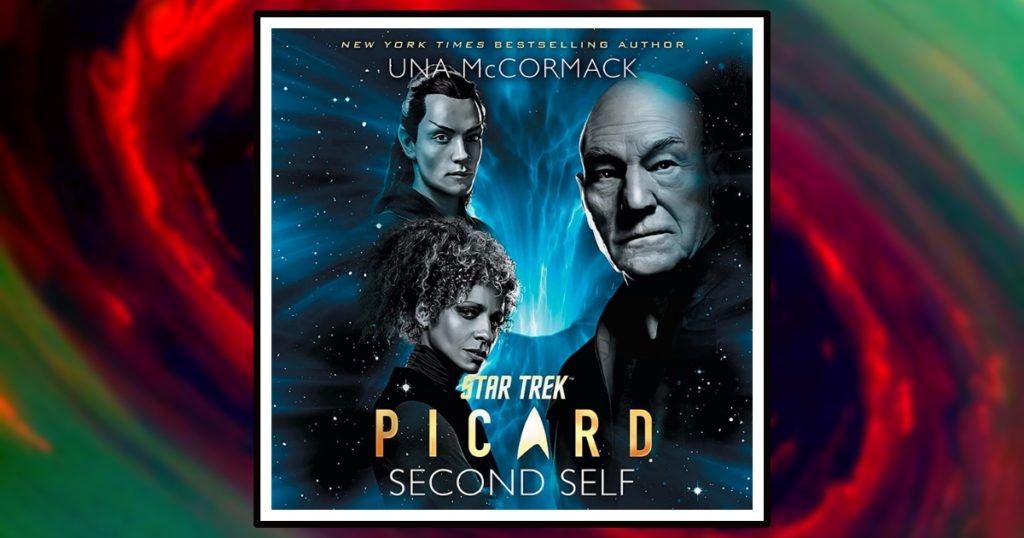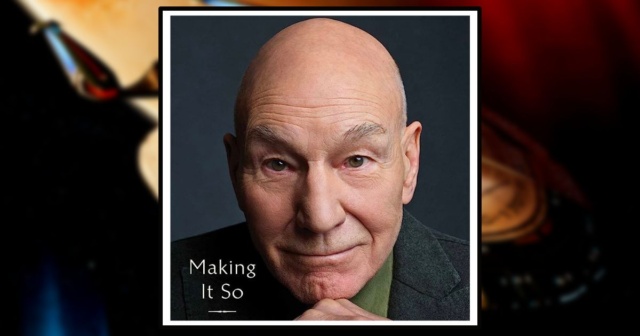Review: ‘Star Trek: Picard’ Season 3 Finale
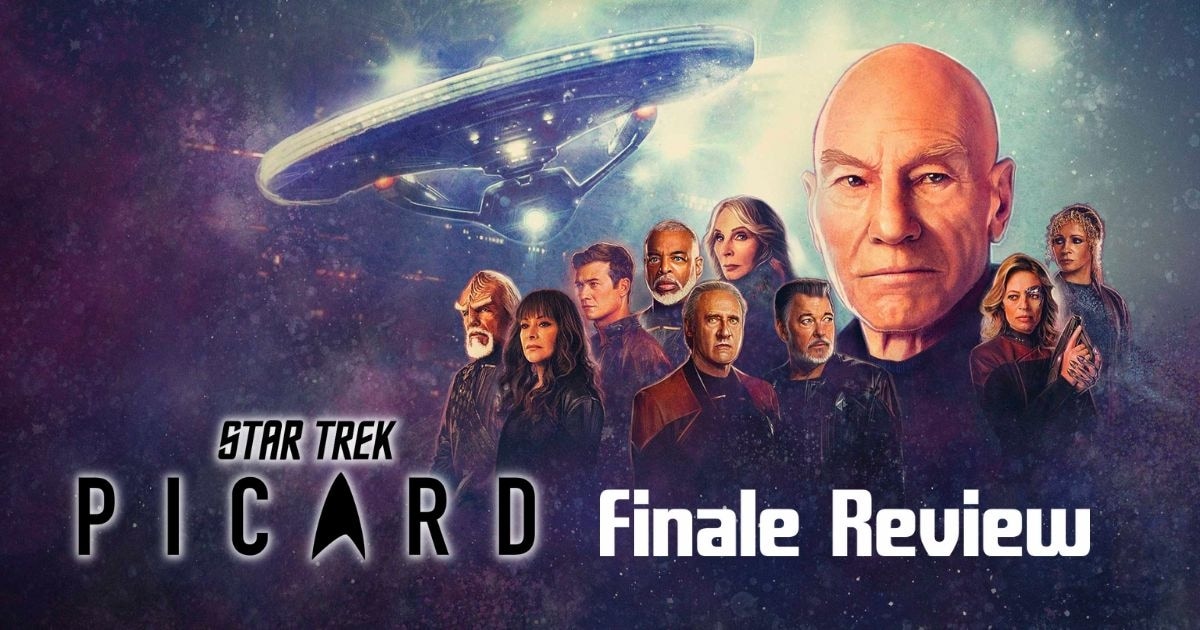
The Star Trek: Picard finale episode, “The Last Generation,” premiered on Paramount + early this morning, although some lucky theatergoers saw it last night in IMAX. The final episode of Star Trek: Picard season 3 was a fitting conclusion to the series. It was full of action, adventure, and heart and did a great job honoring the legacy of Star Trek: The Next Generation while thoroughly setting up the pieces for future Star Trek stories.
Star Trek: Picard has been a gift to fans of the original Enterprise-D crew and fans of the shows from the 90s. I’m sad it’s over, but they stuck the landing, and I have so much hope for the future of Trek. Read on for my full thoughts.
A thoroughly enjoyable return for The Next Generation
Picard season 3 reunites the cast of The Next Generation and includes new faces too. Patrick Stewart, Jonathan Frakes, Gates McFadden, Michael Dorn, Marina Sirtis, and LeVar Burton reprise their legendary roles. Their charisma makes you believe that they are a family – and after acting together all these years, they might as well be.

Todd Stashwick, as Liam Shaw, “the dipshit from Chicago,” is gruff and grows on you. Ed Speleers is dashing as Jack Crusher, the tormented son of Picard. And Michelle Hurd and Jeri Ryan are Raffi and Seven of Nine, family members borne by fire from the previous seasons of Picard.
The show’s stunning visuals, masterful storytelling, and complex characters combine to create this world that you want to spend more time in and explore. The ending is satisfying but sad.
The Star Trek: Picard finale furthers the show’s reputation as a visual feast. The show’s cinematography is breathtaking, with sweeping shots of a fleet of starships and one terrifying cube. The score is also superb, perfectly complementing the visuals and setting the tone for each scene. (There’s a reason that as of the writing of this review, the soundtrack for the season is already climbing the music charts!) The music expertly telegraphs the emotions of the stakes the characters face.
The show’s visuals and music are not the only things that make it special. The writing is also top-notch, with complex characters and a serialized storyline wielded with great skill. For fans of The Next Generation, this is peak television. Many moments made me shriek with delight.
[Warning: there are heavy spoilers ahead as we get into a beyond-the-surface-level review and discussion of the season 3 finale of Star Trek: Picard.]
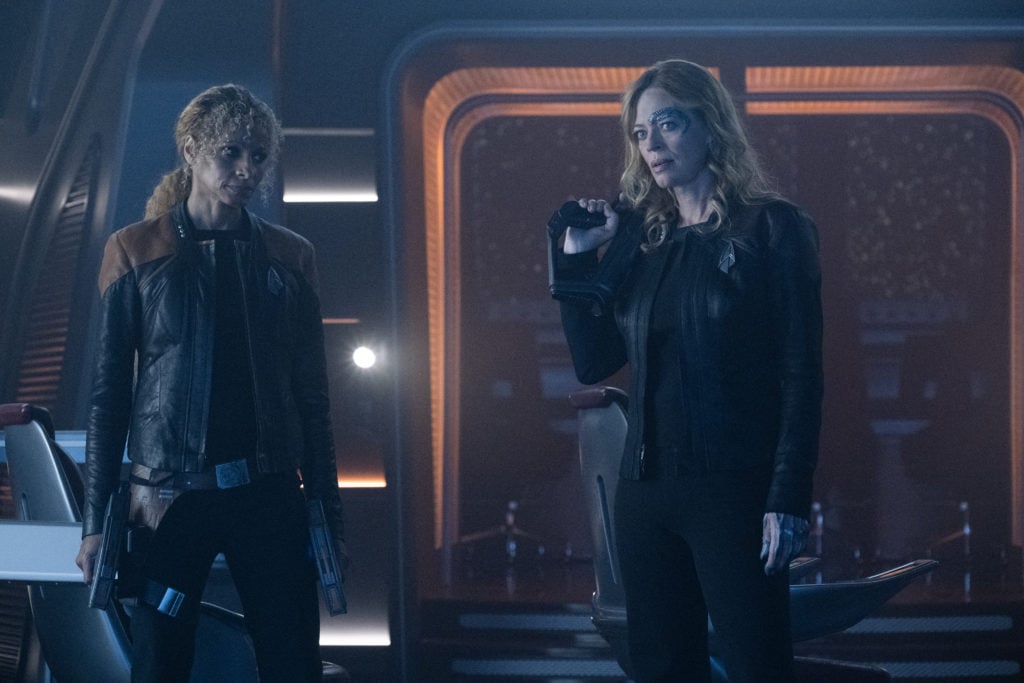
Alice Krige’s return as the Borg Queen
Alice Krige returns as the Borg Queen in The Last Generation and is still lonely. Her body still suffers from the neurolytic pathogen that Janeway unleashed on the collective, and she wants revenge. She also wants a new pet. Picard’s son is her vehicle for that revenge, and it’s terrifying.
Ed Speleers, as Jack Crusher, is haunted and spine-chilling as he voluntarily is assimilated by the Queen and does her bidding. Even after all these years, the Borg are still a formidable foe.
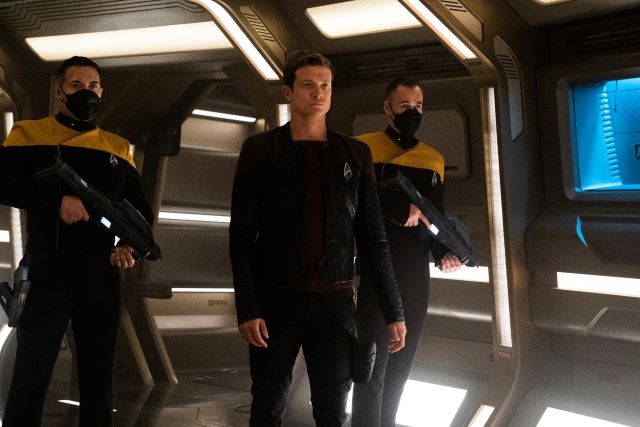
Worf and a good day to die
Worf’s return to his Next Generation family is fun. From his turn to pacifism to his witty comments that are spot on to the character, the writers and the Trek team manage to keep the character fresh and exciting.
The writing and the acting are brilliant. Based on what we saw in Star Trek: Picard, I am totally on the Captain Worf TV show train. And besides, I want to find out what happened with him that destroyed Enterprise.
The Changelings
Not only do we see Changelings, first introduced in Star Trek: Deep Space 9, but they’re significant villains in the series. And we directly talk about the murky ethical things that happened in Deep Space 9 that relate to their species.
These changelings are different – they’re not motivated by a broader hatred of solids but by being literally tortured by the Federation in Project Proteus. These changelings ally themselves with the Borg to bring an end to all that our main characters hold dear. The Borg are brought down (again), but at the end of Picard, the changelings are still out there, able to pass bio-scans because they’re flesh and blood, and that’s shiver-inducing.
Post-credits and a bit of whiplash
The folks at Paramount+ took a page from Marvel and included a mid-credits scene in the Star Trek: Picard season 3 finale. And the mid-credits scene is where you may be left scratching your head if you’ve invested the time in the two previous Picard seasons.
Jack is in his quarters on board the newly-christened USS Enterprise-G. He’s unpacking his personal effects – including a model ship from 10 Forward and a framed picture of his parents looking dapper in their younger years when a voice pops behind him.
The voice belongs to Q (John de Lancie), and it’s quite shocking to Jack and us as the audience. Jack, of course, knows who Q is – he learned all about the continuum-dwelling lifeform from his father. Q informs Jack that although Picard’s trial for humanity has ended, Jack’s trial is just beginning.
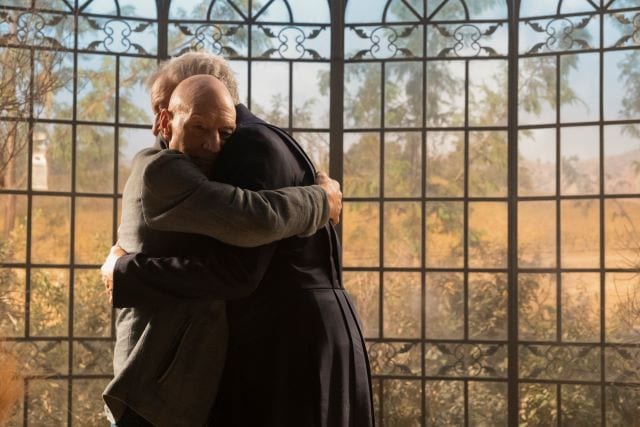
If you watched season 2 of Picard, this was especially shocking because in the season finale, “Farewell,” – Q appeared to have died. Q’s “death” was the emotional payoff for a huge journey through the season. Jack Crusher even quips this in the scene, commenting, “I thought you were dead.” Q replies, ” And here I was hoping the next generation wouldn’t think so linearly.”
Things aren’t always what they seem, of course, but everything in season 2 of Picard built to that fateful snap and death by Q in the finale. After years of torment and an unhealthy relationship, his last gift to Picard was ridding him of guilt over his mother’s death. The mid-credits scene invalidates that. Q is still around. Maybe he was never dead. Maybe the continuum had mercy on him. Perhaps it’s a mirror Q – but whatever it is, that ending to season 2 feels cheaper now.
Q’s appearance encapsulates the one thing that bugs me about this season of Star Trek: Picard. I want to be clear, this was an incredible season of television, and this finale episode, in particular, was a fitting end. I have no notes on the season when taken on its own and not in the context of the prior seasons. And the finale itself was a tremendous and thoroughly satisfying television episode. My hat is off to the team that pulled off this feat of masterful storytelling.
What about Picard seasons 1 and 2?
But on a larger macro scale, this season ignores some of the character development previous two seasons of Picard. I felt like I held my breath until the finale, waiting for us to have a continuation of that throughline from the earlier seasons. It didn’t happen, and we didn’t get closure for characters like Laris or Elnor.
You might be reading this and thinking – but wait – Picard’s organic body was significant this season. Yes, it was. Picard’s body was replaced by a positronic one at the end of season 1, his flesh going off to the nethers of the Daystrom Institute. The Changelings would steal that body in season 3, its parietal lobe harvested and turned over to the Borg. It turns out Picard didn’t have Irumodic syndrome, but instead, a piece of organic Borg tech was embedded in his brain that mimicked the symptoms and made him a receiver of sorts for Borg commands.
Once this tech was out – the Borg and Changelings made it part of Starfleet’s transporter code. It allowed them to take over and assimilate the youth of Starfleet. It was a plot device instead of being character driven.
Picard season 3 misses the mark with the new characters.
Sure, we have Raffi and Seven as part of the extended Next Generation family now. They have a history together, and Seven has her own Trek history intertwined with that of Voyager. It is a testament to the skill of the team behind Trek that you could watch season 3 of Picard without ever having season an episode of season 1 or 2 and not be lost. But it’s also a bit baffling and frustrating, especially if you watched those seasons and invested in the stories and, more importantly, the characters.
Elnor and the USS Excelsior
Let’s consider Elnor, played by Evan Evagora. One of the big drivers of change for Raffi in season 2 had to do with Elnor’s death. She felt responsible for it. We all shared in the character’s joy when he was revived at the end of the season. And there was an expectation that we would visit that again. I may have missed it – and there’s an argument to be made that Elnor deserves more than a blink, and you missed it resolution – but I don’t think he was even mentioned this season.
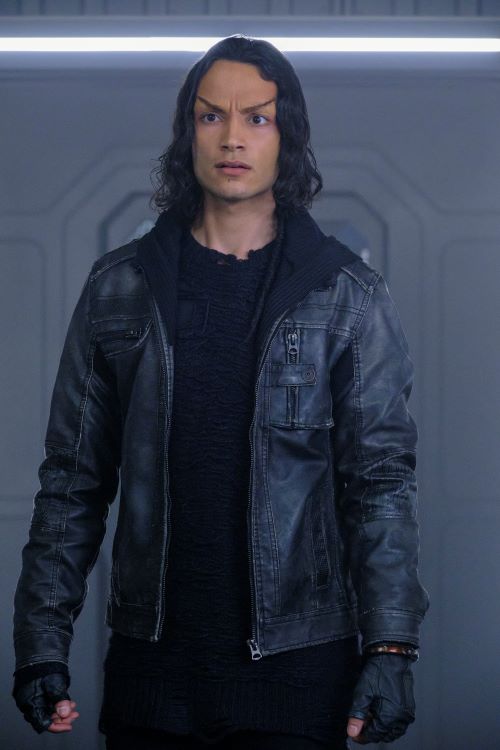
The USS Excelsior was in Episode 9, “Vox.” That’s the ship Elnor was assigned to in season 2. According to Picard’s showrunner, Elnor survived the Frontier Day massacre. For Raffi’s character especially, there’s a missed moment there.
Laris’ undeveloped potential
Laris, played by Orla Brady, was also largely absent from season 3 of Picard, although she was in the first episode. When Picard gets the distress signal from Beverly aboard the SS Eleos, Laris and Picard are planning a romantic getaway to Chaltok IV. The romantic relationship is paying off the journey of season 2, where Picard and Laris find love at the end of the season. There’s an argument to be made that this relationship that Picard has earned with Laris is part of the whole point of season 2.
And in season 3, outside of that first episode, she’s not there. Picard has gone on another adventure with his ragtag band of friends, and she’s an afterthought. The Laris character has a rich and complicated background – she’s a former Tal Shiar and a badass in her own right, but we explore none of that. She could be helpful!
Furthermore, some of Picard’s growth from season 2, where he overcame his intimacy issues, is reset. There’s no calling home or checking in – and he doesn’t rely on her at all, even though the relationship was solid. And one of the final scenes of “The Last Generation” has Beverly and Picard flying off in a shuttlecraft together as they drop off Jack for his first Starfleet posting. It’s an intimate family moment and certainly gives the appearance that the relationship between the two is at least brewing.
Why did Star Trek: Picard ignore these characters?
Star Trek: Picard’s storytelling is serialized, something that Star Trek: Deep Space 9 did so excellently, and a style of drama that has become very popular in recent years with streaming. And on an individual season level, the serialized storytelling is excellent. I suspect that may be because of the shorter episode number that is endemic in the modern television landscape.
DS9, though heavily criticized at the time for its format, had time to breathe and follow the stories and the characters with their 20+ episode orders. Picard didn’t have that luxury. Based on how good the episodes we did get are, Picard’s phenomenal team would have hit these things if they had the screen time.
I just kept waiting throughout this season for there to be some further acknowledgment of the Picard stories besides the positronic body that had come before. I’ll keep watching, though, and I hope we visit again with those old friends.
What’s next for Picard?
The ending of Star Trek: Picard is a respectful conclusion to the story of the cast of The Next Generation and the Enterprise-D. It brings closure to their stories, leaving open the possibility for future tales. The most straightforward path forward after Star Trek: Picard involves the so-called Star Trek: Legacy project. It’s trended on Twitter, and the Picard team has expressed their desire to run with it.
What is Legacy? Before his character died in episode 9, “Vox,” most chatter surrounding legacy involved Todd Stashwick’s Captain Liam Shaw of the USS Titan-A. Shaw’s death threw water on those fan hopes.
One of the final scenes in The Last Generation sums up the most viable plan for what Star Trek: Legacy could be, and it involves Captain Seven. This is an exciting possibility – Jeri Ryan and the assembled bridge crew can carry a show. I wrote back in 2022 that I had hoped for us to explore the Fenris Rangers more with Seven, but a Legacy project is so much better and something I would have never imagined.
Of all the characters in Star Trek, Seven of Nine has grown dramatically, from her first appearance on Voyager to where she tentatively embraced her humanity and then the return to the Alpha Quadrant. The journey we’ve been on with her as an audience has been emotional, action-packed, and worth watching every step of the way.
Even more encouraging about a Legacy project is the possibility of seeing more Voyager family members. The finale of Picard reunited Tim Russ’ Tuvok and Seven, but otherwise, there’s been a lot of live-action Trek and no return to the folks from the little ship in the Delta Quadrant that could go.
Star Trek: Prodigy, the animated show that has carved a niche as must-watch family entertainment, prominently features Voyager’s Janeway (Kate Mulgrew). Indeed, the friendship between Janeway and her former first officer, Maquis Chakotay (Robert Beltran), is a driving force for the series’ stories. But there has yet to be anything in live-action.
With Star Trek: Picard finally providing one last solid adventure and a fitting end to the journey of The Next Generation, it’s time for us to see Voyager’s crew get its day in the sun. Now that we’ve had Jack Crusher let’s meet Miral Paris.
Star Trek: Picard’s season finale is now streaming. Check it out if you have the time. Did you watch the grand finale of Star Trek: Picard? What did you think? Please join the conversation with us on Twitter @MyCosmicCircus or our Discord.

